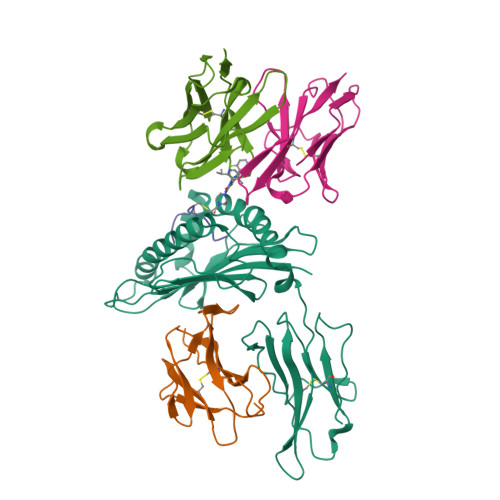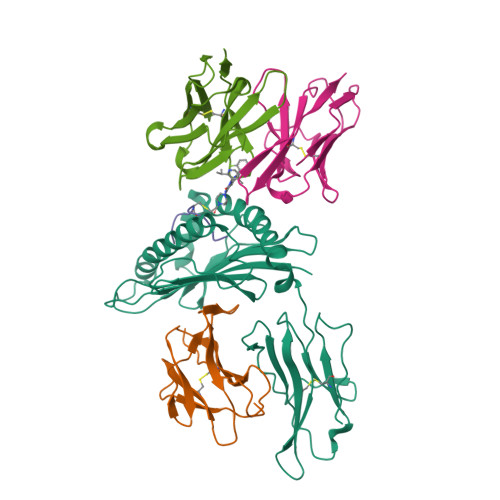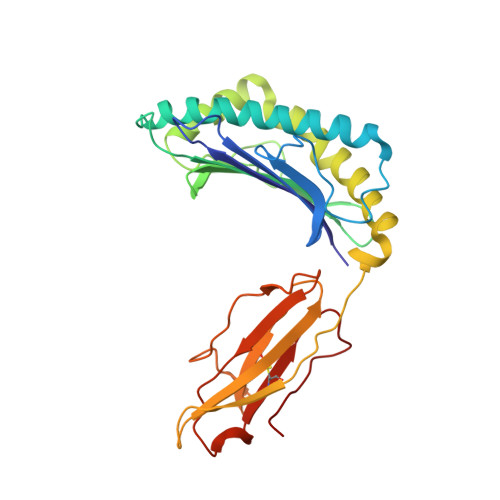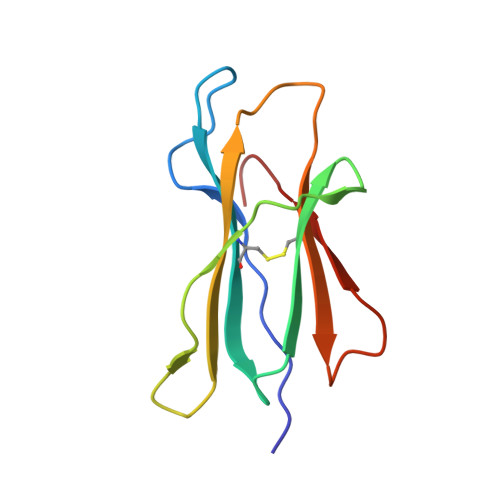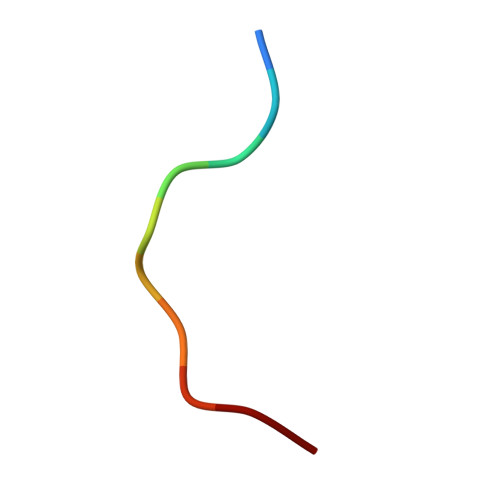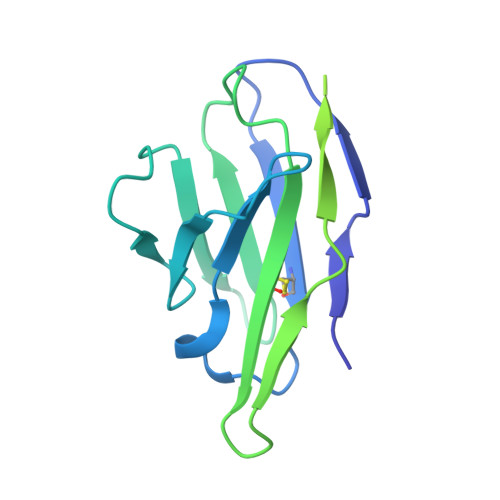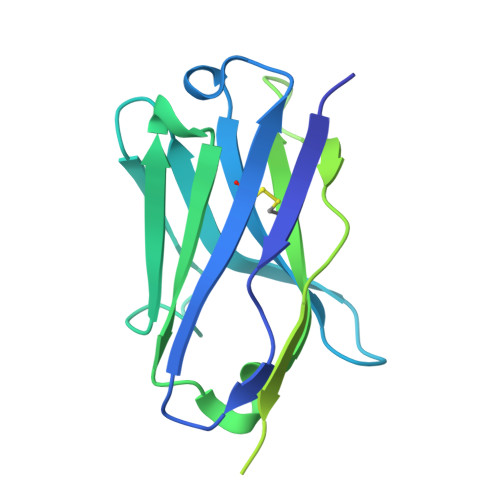Molecular basis for antibody recognition of multiple drug-peptide/MHC complexes.
Maso, L., Rajak, E., Bang, I., Koide, A., Hattori, T., Neel, B.G., Koide, S.(2024) Proc Natl Acad Sci U S A 121: e2319029121-e2319029121
- PubMed: 38781214
- DOI: https://doi.org/10.1073/pnas.2319029121
- Primary Citation of Related Structures:
8VR9, 8VRA, 8VRB - PubMed Abstract:
The HapImmune TM platform exploits covalent inhibitors as haptens for creating major histocompatibility complex (MHC)-presented tumor-specific neoantigens by design, combining targeted therapies with immunotherapy for the treatment of drug-resistant cancers. A HapImmune antibody, R023, recognizes multiple sotorasib-conjugated KRAS(G12C) peptides presented by different human leukocyte antigens (HLAs). This high specificity to sotorasib, coupled with broad HLA-binding capability, enables such antibodies, when reformatted as T cell engagers, to potently and selectively kill sotorasib-resistant KRAS(G12C) cancer cells expressing different HLAs upon sotorasib treatment. The loosening of HLA restriction could increase the patient population that can benefit from this therapeutic approach. To understand the molecular basis for its unconventional binding capability, we used single-particle cryogenic electron microscopy to determine the structures of R023 bound to multiple sotorasib-peptide conjugates presented by different HLAs. R023 forms a pocket for sotorasib between the V H and V L domains, binds HLAs in an unconventional, angled way, with V L making most contacts with them, and makes few contacts with the peptide moieties. This binding mode enables the antibody to accommodate different hapten-peptide conjugates and to adjust its conformation to different HLAs presenting hapten-peptides. Deep mutational scanning validated the structures and revealed distinct levels of mutation tolerance by sotorasib- and HLA-binding residues. Together, our structural information and sequence landscape analysis reveal key features for achieving MHC-restricted recognition of multiple hapten-peptide antigens, which will inform the development of next-generation therapeutic antibodies.
Organizational Affiliation:
Laura and Isaac Perlmutter Cancer Center, New York University Langone Health, New York, NY 10016.








